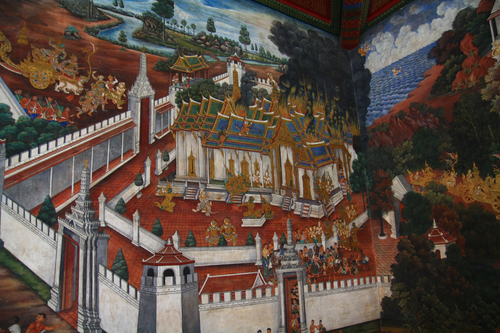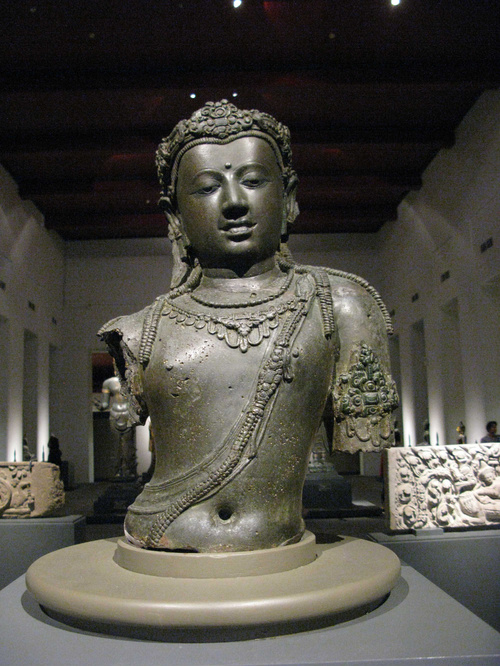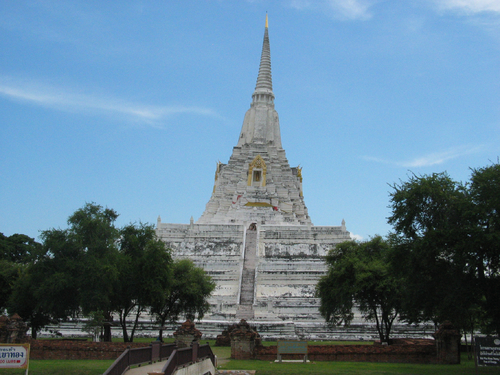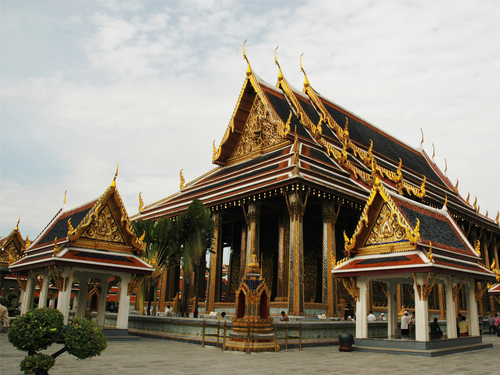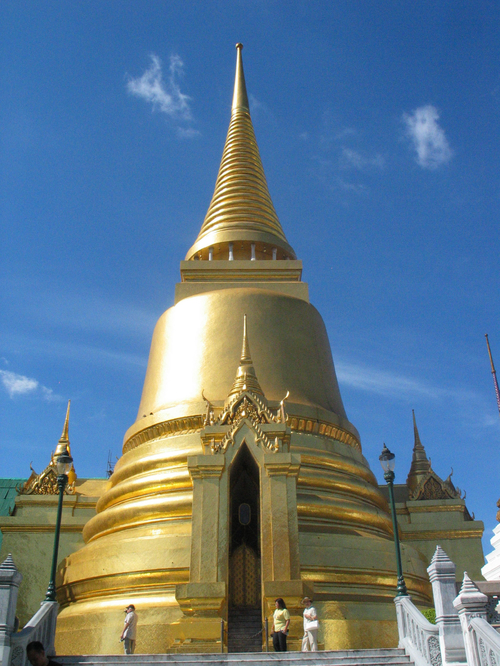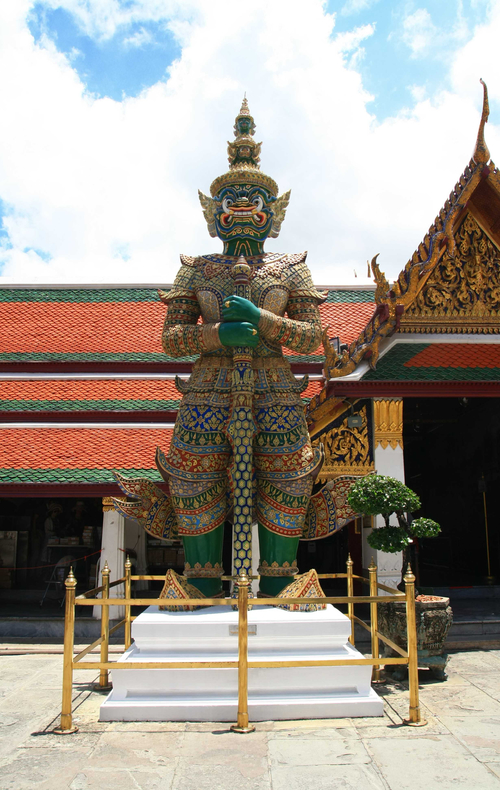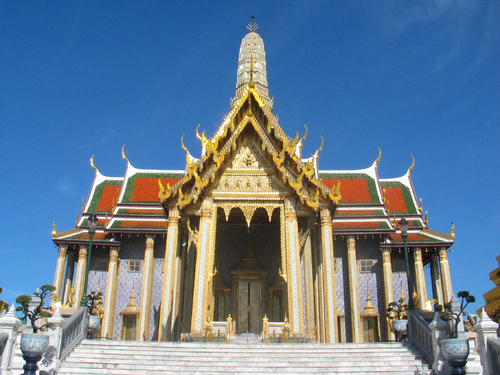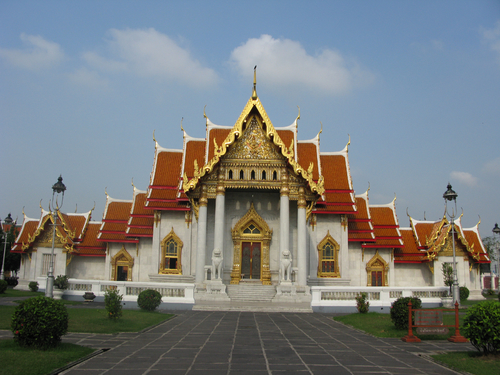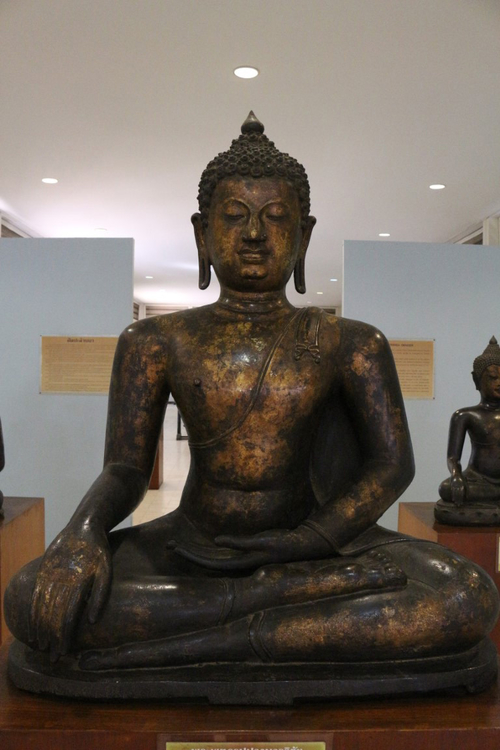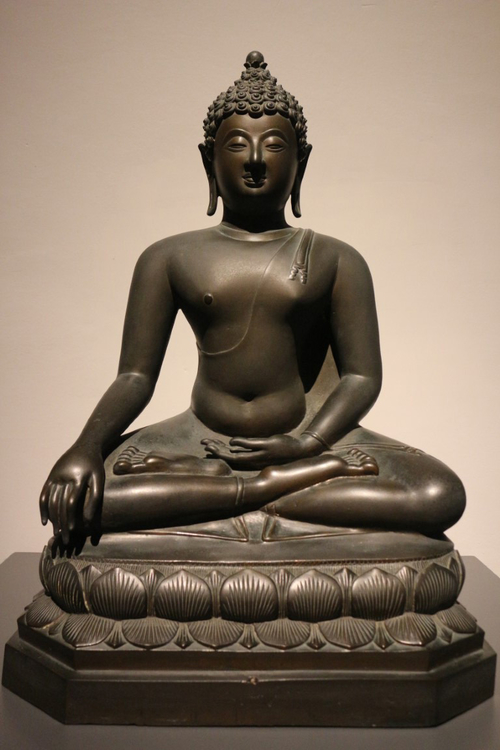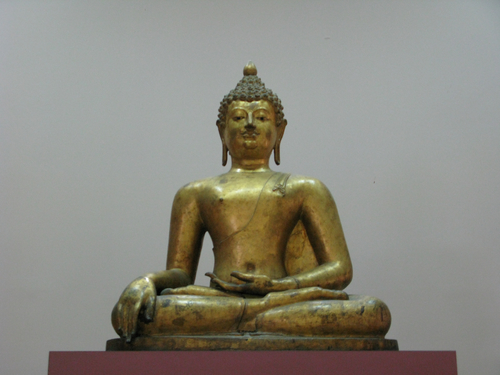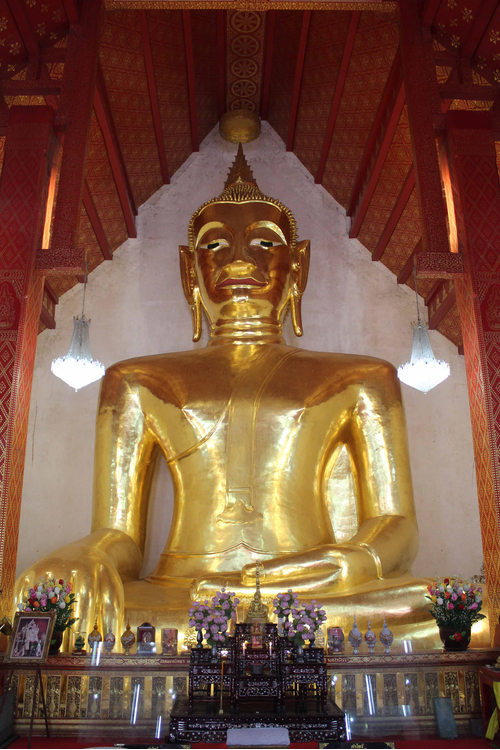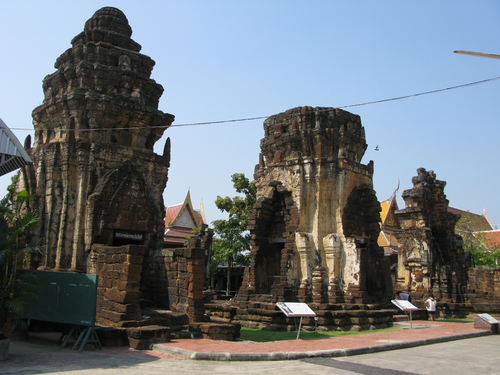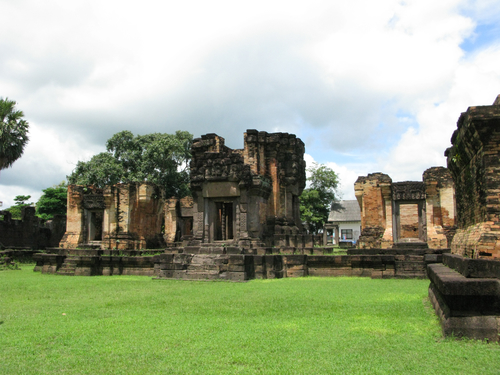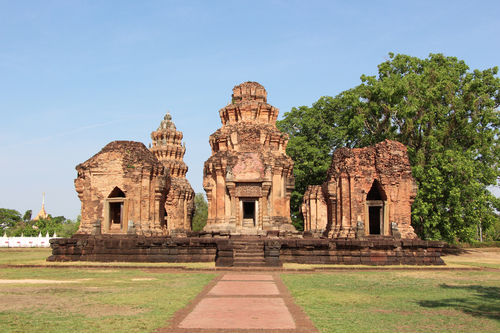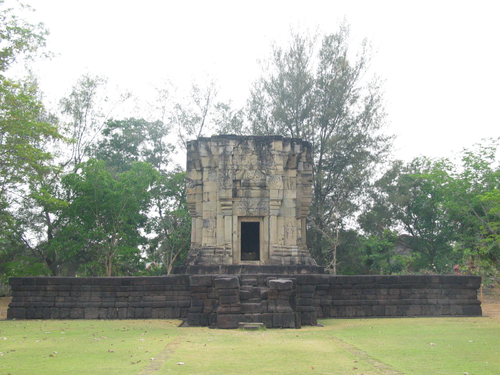Arts in Southeast Asia
ฐานข้อมูลศิลปกรรมในเอเชียตะวันออกเฉียงใต้
ศิลปกรรมยอดนิยม
Most Popular
ศิลปกรรมล่าสุด
Latest
Minaret of Masjid Kampong Kling
The Southeast Asian-styled mosques are different from Indian or Persian masjids. The mosque has a square plan with 4 pillars supporting the sloping roof with the wooden beam supporting the tile roof without any dome. Other interesting point is the minaret that has stacked body with the Chinese sloping roof at the top. The shape of the minaret is similar to Chinese pagoda. At the same time, the minaret is also look alike the Dargarh type tower in Nagapattinam in South India
Dutch Colonization Period
17th – 18th century
Architecture
SculptureThe Subduing Mara Buddha Image
This Buddha image sits in a half-lotus seat on a smooth base and shows Subduing Mara posture. It has a round face, big knotted hair, look-down eyes, slightly open mouth, knot jaw, fat body and short sanghati above the chest.
SculptureThe Subduing Mara Buddha Image
This Buddha image sits in a full-lotus seat on a supine lotus with a pollen pattern base in a Subduing Mara posture. It has a round face, big knotted hair, look-down eyes, slightly open mouth, knotted jaw, ushnisha with lotus shape on top, fat body and short split ends sanghati above the chest.
SculptureThe Subduing Mara Buddha Image
This Buddha image sits in a full-lotus seat on a smooth base displaying the Subduing Mara posture. It has a round face, big knot hairs, look down eyes, slightly open mouth, knot jaw, ushnisha with lotus shape on top, fat body and short split ends sanghati above the chest.
SculpturePhra Chao Ton Luang
This Buddha image sit in a half-lotus seat on a floor and shows subduing mara posture. It has a square and oval face shape, the look-down eyes, curly upper lip, the flick up mouth corner, delicate body, plump hands, unequal length fingers and large sanghati reaching belly.
ArchitecturePrasat Kumpanglang
Prasat Kumpanglang is surrounded by a square laterite wall. It is facing east. Inside the laterite wall is the location of four laterite prasats in Khmer Arts. The 3 prasats in the front were arranged in a north-south line. The principle prasat is taller than the other two. This is similar to Prang Sam Yod in Lopburi.The fourth prasat is located behind the principle prasat on the east side. Stucco patterns appear on this prasat. In the front there is a gopura or an entrance. Inside the laterite wall on the eastern area appears a pond. Important artifacts that were found here are the radiant Avalokiteshvara Bodhisattva, the body part of the 4- arm Avalokiteshvara Bodhisattva, the body part of a Buddha image Sheltered by a Naga, and the head of Prachya Paramita. The use of laterite as the main material for the construction and the layout of the diagram displays the motto of the Buddhistic Triad. The northern prasat is Prachya Paramita, the central prasat is the Buddha image Sheltered by a Naga, and the southern prasat is Avalokiteshvara; the arrrangement of the idols like this is found in Mahayana Buddhism during the 18th century B.E. in the reign of King Jayavarman VII; therefore, the age of the site can be determined to be contemporary with King Jayavarman VII. The Preah Khan Inscription of Cambodia mentioned Mueang “Srichaiya Watcharapura” (Mueang Phetchaburi) that it was one of the six ancient Mueangs in the Central Region where one of 23 Pra Chaiya Buddha Mahanat had been sent from Mueang Phra Nakhon Luang to be enshrined in Mueang Phetchaburi. When compared to the ancient ruins, it can be confirmed that this Prasat Kumpanglang is the prasat mentioned in the inscription. Prasat Preah Khan is a prasat that is contemporary with King Jayavarman VII as well.
ArchitecturePrasat Sa Kamphaeng Yai
The prasat has a crooked balcony surrounded in a square shape. Inside the crooked balcony, there are 6 buildings, three of the principle prasats are located on the same base. At the front there are 2 Banalais in rectangular diagrams, and at the back there is one more prasat which is indented to the south, that makes imbalance to the diagram.The principle prasat was built using both sandstone and bricks as the main materials. The wall of the prasat is usually built with bricks. Sandstone was used with the engraving area such as gables, lintels and decorative pillars at the door frame. Incidentally, the combination of two types of materials in the same building is considered a unique feature of Khmer Arts in Thailand only.Though the patterns found at the Principle prasat of Prasat Sa Kamphaeng Yai were influenced by Nakon Wat Arts, however, the diagram and architecture elements still shows a connection with the old style castle, such as no long Mondop but only a short porch, etc. There is only one prasat situated outside of the diagram of the three principle prasat. Its location is behind the three prasats towards the south. The motto of building this prasat is still unknown. However, it can show the imbalanced construction of Khmer prasats in Thailand.
ArchitecturePrasat Sikhoraphum
There are 5 prasats located on the same base. The Principal prasat is the largest and the other 4 are surrounding the Principle prasat in each corner. Except the east side which is an entrance, the prasat is surrounded by a ditch.This prasat was built in the 17th century B.E. which was the time of mixed arts in Nakhon Wat style. The date can be judged by the patterns on the door frame and the lintel of the principle prasat. However, this prasat was built with bricks while other prasats built in the Nakhon Wat style found in Cambodia always use sandstone. The diagram of Prasat Sikhoraphum is different than other prasats in Thailand because there are 5 prasats located on the same base with the principle prasat in the middle surrounded by other 4 prasats in each corner. Generally, there are only 3 prasats located next to one another on the same base found in Thailand.Each of the prasats are not connected; they all are stand- alone prasats. The walls are plain and the main material are bricks. The engraved areas such as lintels, door frames, and door frame’s pillars were done using sandstone. The mix of these two materials had appeared before since Prasat Wat Sa Kamphaeng Yai that is located nearby and it is a local style of Khmer prasat in Thailand because prasats built in the Nakhon Wat style found in Cambodia always use sandstone to engrave. Since there is an image of Shiva Nataraja appeared on the lintel of the principle prasat, it is highly possible that this prasat was built in Shaivism. These 5 prasats might be the places where the Shiva lingam, the symbol of Shiva, used to be located. Later on, this prasat was transformed into a religious place in Theravada Buddhism by people who immigrated from Laos. Important evidences include door frames inscriptions, and the restoration of the top of the prasat that is located in the southwestern area of the prasat, to make it resembling to the relics in Lan Chang Arts in Buddhism. It has been reconstructed to mimic the castle’ spire in Khmer Arts, but its style is clearly different from its prototype. The jackfruit petals have been rearranged as well.
ArchitecturePrasat Ban Phlong
It is a small single prasat built from sandstone located on a large cross-shaped Phaitee laterite base. The fact that the laterite base has two wings which are much larger than the prasat itself can assume that that there might be a plan to build a surrounding prasats. However, those prasats are not in existence nowadays. It is unknown whether the prasats had never been completed or they were built with wood, so they had all been lost.This is an example of a small prasat with quite complete carvings. The main entrance is in the east while the other three are false doors. The prasat has beautiful engravings in Baphuon Arts both on the lintel and the gable. Therefore, the age of the prasat can be assumed to be around the late 16th century B.E to the early 17th century B.E. The peak of the prasat might be built with bricks but it was lost over time. The lintel of this prasat usually consists of a Kala face sticking out a triangular tongue to the front and spitting out a garland and this is a typical Baphuon style. Sometimes there is a bunch of flowers to separate the crescent lintel and sometimes there are none. This proves that the crescent and non-crescent lintels are popular in contemporary times.The gable is in Baphuon style. It is in a shape of a flower stalk facing downward. There is a Naga with a visor. Inside of the gable composed of flora patterns with a Kala face underneath. With the appearing visor, it may be possible that this prasat is in the late Baphuon period and its age may be slightly later than Prasat Khao Phra Viharn and Prasat Mueang Tum. Both the gable and the lintel of this prasat show images of Krishna in various episodes such as Krishna lifting the Kovanthana mountain and Krishna subdued Naga Kaliya. In addition, the images of Indra on the Erawan elephant also appeared in several areas.



